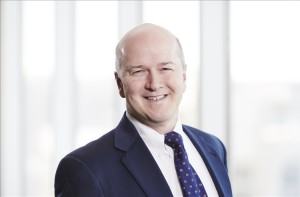The alternative reinsurance market is on steroids, bulking up to represent an estimated 12 percent of the global reinsurance market, according to estimates from Aon Benfield. This may seem like a paltry slice of the business, but it is more than double the alternative market’s share of five years ago and triple the size from 2008. Most notably, the alternative market’s expansion far surpasses the growth in traditional reinsurance capital.
For instance, might there be interest among investors like pension funds and hedge funds in gambling their dollars on casualty reinsurance, betting on a profit from such underlying risks as medical malpractice or directors and officers liability? What about reinsurance for cyber liability, a growing threat reputedly costing the world economy in excess of $375 billion annually? Why not an alternative capital market absorbing primary risks, as opposed to providing alternative forms of reinsurance? Nephila Capital reportedly has arranged risk capital for the underwriting of property insurance through wholesaler broker AmWINS. Might similar uses of alternative capital follow in this direction?
The answer to all these questions appears to be a cautious “yes,” assuming very specific conditions are in place.
Certainly, there is interest among insurance-linked asset managers to widen the menu of alternative investments offered their clients. One reason is that these unique investments have a diversifying effect on client portfolios—the profits and losses of an insurance-linked security for hurricane losses are not correlated with profits and losses in other investments like stocks and bonds.
“Most things that have not been tried will be tried,” predicted John Seo, co-founder and managing principal of Fermat Capital Management LLC. “There is almost nothing ILS cannot do with the right people on board.”
 “We still think that an ILS manager must think carefully before competing in the insurance markets with insurers, who are, after all, the bulk of our client base.”John Seo, Co-founder and Principal, Fermat Capital
“We still think that an ILS manager must think carefully before competing in the insurance markets with insurers, who are, after all, the bulk of our client base.”John Seo, Co-founder and Principal, Fermat Capital
He added, “We are still in an expansion and exploration phase…looking a bit into flood these days [and] thinking about cyber too. But we still think that an ILS manager must think carefully before competing in the insurance markets with insurers, who are, after all, the bulk of our client base.”
Possible But Problematic
There are three factors that must occur in unison for an ILS market to form outside the confines of property-catastrophe reinsurance: a commercial need for this risk transfer capital, the ability to index or otherwise quantify the profit and loss so investors have an idea of what they’re betting on, and the ability to demonstrate whether or not investors will perceive a sufficient return from the alternative market instrument.
A commercial need alone for sources of alternative capital to transfer risk is not enough to justify the development of an ILS market. “If a capacity shortage develops for, say, lawsuit risks, you’d still need to be able to quantify lawsuit risks,” said Barney Schauble, a partner at Nephila Capital. “Right now, we don’t have the underlying science for that. Even if we did, we’d still have to demonstrate a sufficient return to investors. Just because the risk is noncorrelated doesn’t mean it’s super attractive—obviously not if it is going to lose money.”
Others agreed with this perspective. “With property-catastrophe reinsurance, we have an objective, independent loss index to base the losses on,” said Donald Watson, executive vice president of specialty insurer and reinsurer Arch Capital Group Ltd. “You’d need to design a similar mechanism for other risks. In some cases, this may not be possible.”
All three legs of the stool need to be in place for a new ILS market to form and be on firm footing. Having the ability to develop a technical infrastructure for an ILS investment product and the potential for a significant return on investor money are both important legs of the stool. But without a commercial market need for this atypical source of insurance capacity, the stool will falter.
“From a technical standpoint, developing alternative capital for lines like marine or aviation that are similar to the property business would not be a problem,” said Schauble. “But there is currently plenty of capacity in these markets. The question then becomes, ‘Do they really need investor capital, or do the traditional insurance and reinsurance markets already do a good job?’”
Similarly, a pronounced capacity shortage along with the ability to develop a reliable loss index also would be insufficient for an ILS market to form. “The margins have to be there,” Watson asserted. “For instance, we’ve long talked as an industry that automobile insurance is a perfect thing for securitization. The problem is the margins are thin, meaning the threshold returns will be low. If the margins aren’t fat enough, investor interest will be negligible.”
Is it possible to develop a three-legged stool for markets outside property-catastrophe reinsurance? What about an ILS market for casualty insurance? Do the asset managers read this in their tea leaves? Seo is optimistic, just not at the present time. “I don’t see why casualty can’t be more prevalent in the ILS market,” he said. “But right now the casualty market is too cyclical for a consistent alternative risk transfer market to form around it.”
If the market undergoes a radical consolidation or experiences a significant disruption, he said there “might be an opportunity for ILS to play a role. It’s just hard to see that happening now.”
Robert Hartwig, president and chief economist of the Insurance Information Institute, posited another potential drawback to the creation of a casualty ILS-like market: investor interest. “Casualty alternative risk will appeal to a far narrower class of investors than those that are currently interested in property-catastrophe reinsurance, such as pension funds and hedge funds,” he said. “The risks are long-tailed, so this would mean that the investors would have to wait 10-15 years in some cases to learn whether or not their investments will pay off. Most investors lack this patience, which is why most alternative market products are one to three years.”
The vagaries of the U.S. tort system are another downside making investors leery of parking their cash in a casualty alternative capital market. “The degree to which you can model casualty risks is much less precise than with natural disaster risks,” Hartwig explained. “That, in and of itself, makes it less attractive.”
OK, so what about cyber risk transferred through some sort of ILS instrument? Schauble sees definite possibilities—to a point. “We’ve given cyber risk some thought, but at the moment insurers and reinsurers seem quite happy to provide capacity,” he said. “If a capacity need arose, we’d then need to be able to quantify the risk. There are some smart people in Silicon Valley right now thinking about this. Of course, we’d also need to demonstrate profitability to investors, so we don’t have three yeses at the time being.”
Seo agreed that it is too early to develop an alternative market for cyber, but he is sanguine about the possibility. “It’s ‘early days,’ but I’d nonetheless love to see cyber in the ILS market someday,” he said. “I believe that ‘cyber peak perils’ will eventually make their way into the ILS market. But they need to be truly ‘peak peril’ in nature for this to happen,” he said, referring to cyber attacks on the U.S. power grid, the banking system or the financial markets, for example. Explaining further what might constitute a peak peril for the financial markets, Seo said it would need to create really deep interruptions rather than flash-crash type events—for example, trading volume impaired to half of normal for three months or more.
Watson has a different opinion altogether. “While there is a huge and growing need for cyber [insurance], cheaper capital through an ILS market isn’t the issue,” he said. “The issue is how to obtain an objective index of the loss, followed by some way to determine whether or not the insured company has done all it could do to reduce the potential for an attack. Yes, it could be fat margins for an investor. But why would they want to risk such uncertainty, not to mention potentially huge underwriting losses?”
Sideways Maneuvers
Aside from marine and aviation risks, another area that all the observers agreed holds promise for alternative capital is weather-related risks. “If you look at renewable energy sources like wind-generating farms and hydroelectric dams, both municipalities and businesses are concerned about their financial exposures to higher or lower volumes,” Schauble said. “A similar situation applies to snowfall. Last winter in the Northeast, there was record snowfall—good news for ski resorts but not for the municipalities that have to plow it.”
Such weather-related risks fit all three of Nephila’s criteria for an alternative capital market treatment: a perceived need not being met sufficiently by commercial insurance and reinsurance markets, the ability to quantify the risks due to weather-related predictions and outcomes, and a return on investment that does not correlate with clients’ other investments. “That’s where we’d rather put our investors’ capital,” Schauble said.
Investments Are Bets, After All
While the astonishing growth in the alternative capital market for property-catastrophe risk reinsurance has these and other asset managers thinking about new ILS and related opportunities, Hartwig cautions that what goes up always come down.
“As the history of insurance and reinsurance has proven time and time again, proceed with caution always,” he said. “The reason we’re seeing this sharp upswing in alternative capital growth is because of low interest rates on a global scale pushing investors into other types of securities, plus the fact that Mother Nature has been exceedingly kind in recent years. These are anomalous situations that will change in the future.”
He provided a telling postscript that may have an impact on future investments in nonreinsurance instruments. “From what I’ve been reading and seeing,” Hartwig said, “these deals already are not as attractive for investors as they once were.”
This article was originally published by Carrier Management.
